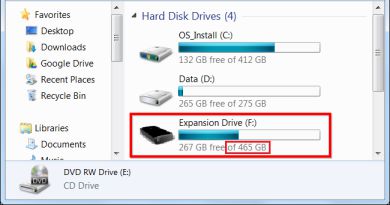The bit is the fundamental unit used to measure information. Aside from bits, numerous other units of measurement are used in computers. In this article, we will present an introduction to the basic units of measurement in computing.
1. Bit – BInary digiT (b)
A bit is the smallest unit of data that a computer can store. To be understood by the computer, all data must be encoded in bits. A binary digit can only have two possible states: 0 or 1.
2. Byte (B)
A byte consists of 8 bits. Byte (B) is usually used to represent the capacity of data storage in the computer.
3. Conversion table for units of measurement
In addition to bits and bytes, we have larger units of measurement to accommodate the growing storage needs.
| Unit | Shortened | In decimal | In binary |
| Bit | b | 0 hoặc 1 | 0 hoặc 1 |
| Byte | B | 8 bit | xxxxxxxx bit |
| KiloByte | KB | 103 B | 210 B = 1024 B |
| MegaByte | MB | 103 KB | 210 KB |
| GigaByte | GB | 103 MB | 210 MB |
| TeraByte | TB | 103 GB | 210 GB |
| PetaByte | PB | 103 TB | 210 TB |
| ExaByte | EB | 103 PB | 210 PB |
| ZettaByte | ZB | 103 EB | 210 EB |
| YottaByte | YB | 103 ZB | 210 ZB |
Note, depending on the definition, 1 KiloByte (KB) can be equal to either 1000 Bytes or 1024 Bytes. Hard drive manufacturers often use decimal notation (1 KiloByte (KB) equals 1000 Byte) to measure the capacity of hard drives. This means that a drive with a capacity of 500 GB will always have less than 500 GB of actual storage.
3. Hertz (Hz)
Hertz (Hz) is a unit used to measure the processing speed of the CPU in a computer. The greater the value, the faster the computer can process information. CPU processing speed is typically measured in Megahertz (MHz) and Gigahertz (GHz).
| Unit | Shortened | Speed |
| Herzt | Hz | 1 Hz |
| Kilohertz | KHz | 1000 Hz |
| Megahertz | MHz | 106 Hz |
| Gigahertz | GHz | 109 Hz |
| Terahertz | THz | 1012 Hz |
4. bit per second (bps)
bps is a unit of measurement of data transfer rate (DTR) per second in bits. And Bps (Bytes per second) is a unit of measurement of data transfer rate per second in Bytes. The transfer rate refers to the speed at which data is transferred, whether it’s between the CPU and RAM, between computers on a network, or elsewhere.
Note, the bit symbol is the letter b (lowercase b), and the Byte symbol is the letter B (uppercase B).
| Name | Symbol | Data transfer rate |
| Bit per second | bps | 1 bps |
| Byte per second | Bps | 8 bps |
| Kilobit per second | Kbps | 1000 bps |
| Megabit per second | Mbps | 1000 Kbps |
| Gigabit per second | Gbps | 1000 Mbps |
| Kilobyte per second | KBps | 8.1000 bps |
| Megabyte per second | MBps | 8.1000 KBps |
| Gigabyte per second | GBps | 8.1000 MBps |
Note: 1 Byte = 8 bit so 1 Bps = 8 bps, the same for KBps, MBps,…
5. Rotation speed of hard disk drive
With HDD (hard disk drive), the speed of the hard drive is featured by RPM (revolutions per minute) which means the number of revolutions per minute. Currently, hard drives typically have rotation speeds of either 5400 RPM or 7200 RPM.
